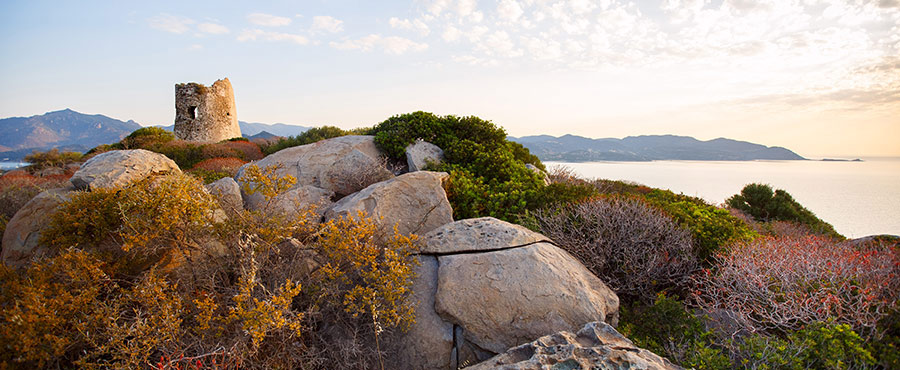Nuraghes and Tombs of Giants.
While thinking about Sardinia, the first image that comes to our mind, not mentioning the awesome landscapes, is that of Nuraghes. Nuraghes are actually synonymous with the island’s culture, because the buildings – ancient megalithic edifices developed during the Bronze Age, from 1800 to 100 BC – exist only in Sardinia. They are the best-known expression of Nuragic period, the first civilization of the island. Today some 7,000 – 9,000 nuraghes do the Sardinian landscape, most of them visitable (Nuraghes are UNESCO World Heritage Sites). Among the most important: Barumini Nuraghe (Campidano), Losa (Oristano), Santu Antine (Torralba), Lu Brandali (Santa Teresa di Gallura). Still concerning Nuragic civilization, of utmost importance are the Tombs of Giants, collective burial monuments scattered throughout the island. The best-known are those of Mont’e Prama in the Sinis area (Oristano). Excavations are currently underway, and they are bringing to light priceless works. Other monuments can be found in Arzachena, close to Costa Smeralda, in the Tomba dei Giganti di Coddu Ecchju site, and nuraghe La Prisgjona. Nuragic populations lived in Sardinia for almost a millennium: worldwide known as warriors and shepherds, they now appear to have been seamen too.
Phoenician–Punic necropolis
After Nuragic civilization, Phoenician-Punic populations set themselves up in Sardinia from 9th century BC to 3rd century AD. The necropolis on Tuvixeddu hill in Cagliari – the largest Phoenician-Punic necropolis in the Mediterranean area, and the Tophet of Sant’Antioco – the biggest ever found – are still well-kept.
Romans and Sardinian language
Romans came after Phoenician-Punic populations. Settled in Sardinia from 2nd to 4th century AD, they gave to the island its language (Sardinian) and some important works and buildings as churches and aqueducts.
Vandals, Byzantines and Giudicati
After the fall of the Western Roman Empire, Vandals attacked Sardinia, but the island was soon conquered by the Byzantines. Following the decline of the Eastern Roman Empire, Sardinian people replaced the Byzantine administration with a Judgeship. The island was then divided into 4 Giudicati (from 9th to 15th century) and this new form of administration constituted the first Self-government structure after the Nuragic period. Its self governing document is known as Carta de Logu, one of the most modern constitutions of the period (1392).
The Age of Commune
At the end of the Judgeship period, Sardinia recognised the jurisdiction of the cities of Pisa and Genova, with which intercourses already existed since the Age of Judges. We know this, because Dante Alighieri mentioned Gallura in his Divina Commedia.
The Spanish Age
Then the Spanish domination began. In 1300 the Crown of Aragon invaded the island, which lived under the Spanish Empire jurisdiction for centuries. Both Sardinian language and architecture were influenced by the Spanish culture, and under their reign the University of Cagliari and the University of Sassari were founded. Nowadays, in the town of Alghero, Catalan is still spoken.
Sardinia and Italy
We remember the first 20 years of the 18th century because of the annexation of Sardinia to the Kingdom of Savoy. In 1861 the island became part of the Reign of Italy.


